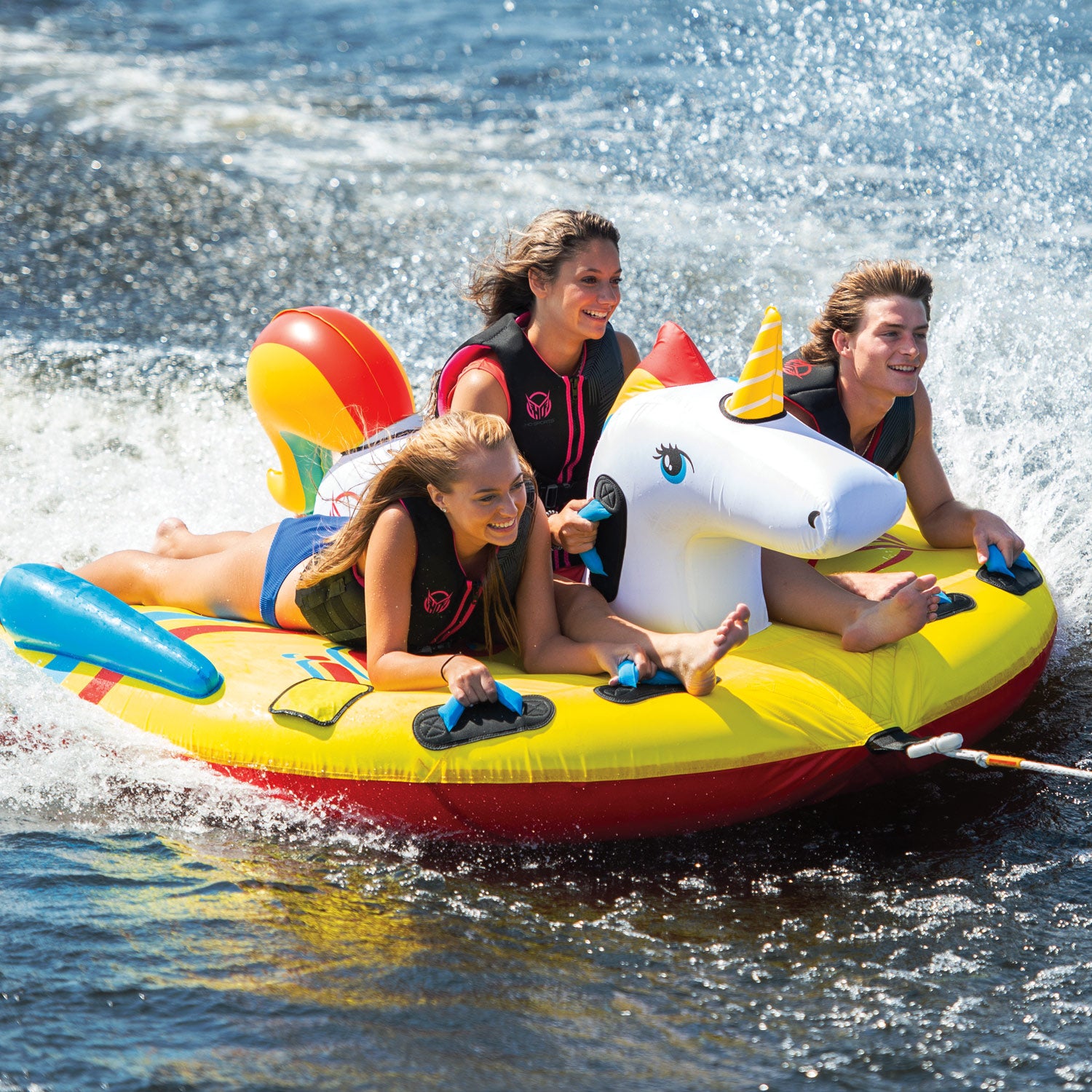A kneeboard is a must have have on any boat. They’re great for everyone to use and have always been a favourite for younger riders. It’s one of the easiest towable watersports to learn but there are plenty of pro model kneeboards out there if you’re taking it more seriously. Find out which kneeboard will suit your needs below.
CONSTRUCTION
Plastic is the most common and durable material used for making kneeboards. Foam filled roto-molded polyethylene makes a buoyant kneeboard that is flexible and forgiving for beginners. While it’s not recommended, if you are teaching people off the bank rather than doing deep water starts a plastic kneeboard will better withstand the wear and tear of a beach start.
Compression molded fibreglass is used in higher end kneeboard designs in a similar process to the construction of slalom waterskis and wakeboards. Fibreglass makes a stiffer, thinner board with better performance than a plastic kneeboard. A stiffer board gives you greater edge control, more speed and delivers more pop off the wake. Some people prefer fibreglass kneeboards as the less buoyant materials make deep water starts a little easier.
Timber kneeboard construction is a recent innovation following similar construction techniques in cable wakeboarding. Timber kneeboards deliver the same thin profile designs as fibreglass boards but are easier on the knees with softer landings and springy take-offs. If you are kneeboarding at the cable park, timber boards with reinforced edges will take the wear and tear from obstacles better than fibreglass.
FEATURES

PAD: The molded EVA foam pad on a kneeboard holds your knees on the board and gives you control. It’s personal preference on how soft or deep you like a kneeboard pad but they are designed to hold your knees on without the use of a strap to make it safer for beginners. The pad is glued to the top of the board so it’s important to keep it out of the sun when it’s not in use.
STRAP: All kneeboards come with a velcro strap to secure your knees into the pad. They can be single or double locking. A single locking strap is the easiest to use but doesn’t give you the adjustability and extra security of a double locking strap. The strap can easily be removed for beginner riders who don’t want to be secured to the kneeboard by unscrewing the footman loops on either side.
HOOK: Almost all plastic kneeboards come with a hook attachment and it’s being used more and more in fibreglass boards too. The hooks is there to put the handle in making deep water starts much easier. Simply place the handle in the hook and let the boat pull you out of the water. Once your up and ready to go just pull the handle out and your off. Hooks are bolted into an insert in the board to they can take the strain of towing. This means you can’t really retrofit hooks to older kneeboard without risking serious damage.
FINS: Most kneeboard are finless so they release easily for surface spins but fins are a great idea if you’re a beginner or you just want more grip from the board. Some kneeboards have their fins molded into the base of the board that cannot be removed while others have retractable fins to give you the best of both worlds.
SHAPE
The familiar pointy nose design was the first ever kneeboard shape invented by Hydroslide. This kneeboard shape gives you a predictable ride with smooth turns and forgiving edges. A kneeboard with a square tip and tail delivers better pop off the wake and releases easier for surface tricks.
The base design of a kneeboard affects how the board feels on the water too. Channeling and cutouts in the base give you grip and allow your board to generate better angle into the wake. A smooth clean base allows the board to release it’s edges easily making your surface spins and takeoffs more predictable.
FUNBOARDS
There’s been an explosion of fun towable devices in recent times. We’re calling them funboards and they’re a great addition to any boating adventure because they are so easy to use. Funboards come in different styles and shapes but they’re all super easy to use and guarantee good times!

DISCS: The humble disc has its place on any waterski boat worth its salt. The more dangerous timber discs are still around but there are plenty of safer foam or inflatable options now available. Check out the inflatable HO RAD series or the soft top Radar disc for a disc that’s less likely to hurt anyone.

TRAINERS: We’re labelling this style of funboard as a trainer because they’re simply the best device for teaching people how to waterski. With foot stirrups and handles, trainer funboards can be used lying down or standing up and the huge surface area and in built tow hook make starts a breeze even for first timers. If you’ve been teaching people to waterski using a kneeboard trainer funboards can offer an even easier alternative

SKURFERS: Yes they’re back! Towing surfboards is what started it all and you can still get one to muck around on. Foam construction makes them super safe and a huge surface area with three big old fins on the back means everyone can get up and have a go.
We hope this guide has helped to explain kneeboards and get you excited about new funboard options. As always, if you have any questions please CONTACT our friendly sales staff.






